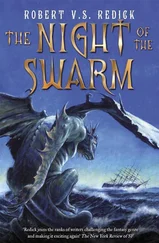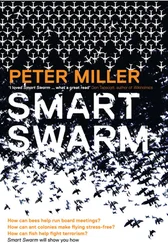I couldn’t believe that a discussion of hit men and ritual cannibalism was actually relevant to my life. My new life. My old life was over, dead and buried forever, because my girlfriend had more or less sold me out to a group of drug-smuggling thugs and torturers who would keep me alive exactly as long as my engineering skills were useful. It was hard to comprehend, and almost impossible to internalize. Like being crippled by a car crash, or diagnosed with metastasized cancer; suddenly, in the space of a single day, the life I had spent years building and planning for had ended, replaced by desperate, grinding survival from one day to the next, unable to see more than a few weeks into a future now almost certain to end with an untimely death. All because of Sophie.
“The girl you got in trouble for,” I said. “Dana. What happened to her?”
“Oh,” Dmitri said, “we married.”
I looked at him.
“It wasn’t her fault. She had no choice,” he said uncomfortably. “We live in one of his mansions, on the ocean. It’s beautiful. You will see. When this is over, you will come visit us. Enough. Time presses. We must work.”
The seminal genius Alan Turing invented the neural network back in 1948, though he called his crude sketch of several interconnected nodes an “unorganized machine.” Electrical signals were applied to some of these nodes, and flowed through the network like water. By changing the strength of the signal that could pass between any pair of nodes, like using valves to control how much water can flow through a pipe, you could, over time, train the system to produce a desired output from a given set of inputs. Turing didn’t know it, but it was the same fundamental design as the human brain.
Sixty-odd years later, the scale of Sophie’s neural networks would have blown Alan Turing’s mind. Her drone controllers had tens of millions of nodes, almost a thousandth as complex as a primate brain. Their inputs were things like GPS data, altimeter, pitch, yaw, camera view and communications signals; their outputs were aerial stability and the selection of an optimal direction.
But unlike traditional computer programming, where any particular action could be tracked back to a specific line of code, the inner workings of neural nets were opaque to human understanding. We could feed them inputs, and measure their outputs, but what happened in between was largely incomprehensible – a “black box”, in techie parlance. In one famous case a neural network had designed an electrical circuit that should not have worked, but somehow did. No one had ever figured out exactly how it had hacked the laws of physics. That scientific breakthrough lay buried forever in accessible in its black box.
Neural network research ground to a near-halt in the mid-nineties because they were painfully prone to both “undertraining”, which in our case would have led to crashed UAVs, and “overtraining”, meaning they worked beautifully in simulation but, like many human students, were totally unable to handle the vicissitudes and uncertainties of the real world. Progress since had been slow – until Sophie came along.
Maybe six people on the planet really understood her work, and I was not one of them. I had read her papers, gone line-by-line over the guts of the software harness used to train her neural nets, even listened to her explain at length, but I was never able to follow. I lacked the mental vocabulary. I wasn’t smart enough.
I was, however, smart enough to make use of her creations.
“Don’t worry,” Dmitri said, when we climbed to the roof of the abandoned school, and I faltered at the sight of six drones parked under an aluminum-framed tarpaulin. “They’re safetied.”
Meaning, I supposed, that the bombs they carried were prevented from detonation by some physical mechanism. But it wasn’t self-preservation that had made me hesitate. It was an idea exploding in my head.
The kill switch. The override sequence. The thirty-character kill-switch command would permanently disable any drone that received it; the override sequence, the secret Sophie had revealed to me when we were adrift in the Caribbean, would allow me to go one better and seize control over any of her neural nets. And Dmitri didn’t know that either existed.
I was trapped, but not helpless; imprisoned, but not without weapons.
“How many drones do you have, anyway?” I asked.
“Enough.” His tone of voice told me not to ask so many questions.
The initial work was straightforward enough. We removed the Axon chips from each drone, and I wiped them clean and rewrote them with Sophie’s latest, bug-fixed swarm configuration. Dmitri watched carefully, but I doubted he learned much: Sophie’s test-harness software was complex and user-hostile.
“You will teach me how to use that,” he said.
I didn’t have much choice but to agree.
Once the drones were upgraded we moved to the little hut that had been constructed atop the building’s roof. It served as a radio control tower. Cables ran to it from the several antennae jutting from the roof. En route I noted several satellite dishes on the building’s other wing, one of them VSAT, meaning a data connection, Internet access. If I could get online somehow, and send Jesse a distress signal…
Later, I told myself, as Dmitri booted the computer inside the control hut. I could plot later. First I needed to watch and learn.
“Packet radio?” I asked, as he opened a communications channel to the drones.
“Yeah.”
“What kind of encryption? DES?”
He laughed. “You think we’d use an American government algorithm? PGP, and a giant key. Slow but safe.”
He typed a password and established a packet-radio connection to all six drones, like a conference call. I plugged my laptop into the radio, accessed the open communications link, and paused.
“What is it?” he asked.
“Just figuring out what test to run first,” I said.
It was a lie. I had hesitated because I was at a nerve center of Ortega’s drone network, with an open channel at my fingertips. I could transmit Sophie’s kill switch and render all six of those drones catatonic, and Dmitri wouldn’t know until it was too late.
If I did, my next and final act would be a slow and painful death. It obviously wasn’t worth even considering it to eliminate only six drones. But if I could connect to all of Ortega’s UAVs, instead of just these six – via their built-in cell phones, for instance – then it would be within my power to permanently disable Ortega’s entire fleet.
At the cost of my own life.
I didn’t really think I was willing to make that sacrifice. But it would be nice to at least have the option available. At least then I wouldn’t feel quite so helpless.
“OK,” I said. “I’ve got an idea.”
Instead of sunken treasure, I had Dmitri send out a thug in a car with a cell phone, and instructed the drones to look for it. The sight of their insectile silhouettes soaring above us in search formation was unnerving, like a flock of giant monsters come to devour humanity. When they winged out of sight Dmitri called up a local terrain map to track them, which revealed to me me this derelict academy’s exact latitude and longitude.
Not that I could do anything with that information. Not yet.
The drones passed those initial tests with flying colours. When one spotted the target, they triangulated its location, swooped towards it, and then fanned out, spiralling outwards to cover as much nearby territory as possible, looking for more targets.
“Good,” Dmitri said thoughtfully, watching the expanding cluster of dots. “But we will be training them to do other things than search. I need you to prepare some new tests.”
Читать дальше












